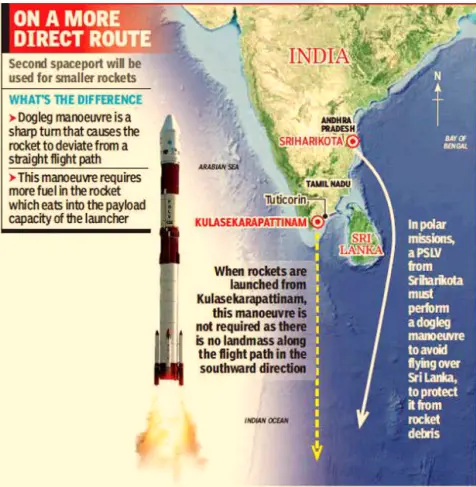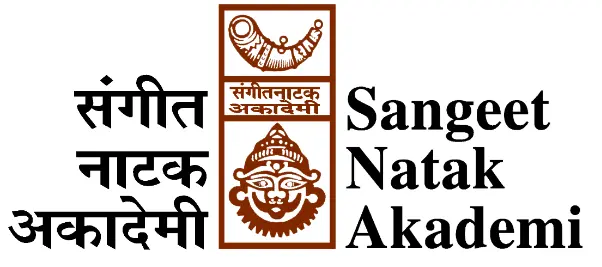Thursday, 14th March 2024
India’s Unemployment Scenario
In News: As per the findings of the Periodic Labour Force Survey (PLFS) conducted by the National Sample Survey Office (NSSO), India witnessed a notable decline in its unemployment rate in 2023, reaching its lowest point in the last three years.
Key Highlights of the Report
- India’s Unemployment Rate
- The unemployment rate for individuals aged 15 and above dropped to 3.1% in 2023, the lowest in the past three years.
- Declines observed in both male and female unemployment rates compared to previous years.
- Recovery in Employment Scenario
- Post the impact of the Covid-19 pandemic, there has been a recovery in the employment scenario with increased economic activity.
- Lifting of lockdowns by the Centre and states contributed to the uptick in economic activity.
- Urban and Rural Unemployment
- Urban areas witnessed a reduction in unemployment rates, as did rural areas, indicating a positive trend.
- Labour Force Participation Rate (LFPR) in Current Weekly Status (CWS) rose in urban areas.
- Economic Growth
- India's economic growth surged to 8.4% in the third quarter of 2023-24, driven by sectors like manufacturing and construction.
- NSO's second advance estimate projected growth at 7.6% for the entire fiscal year, surpassing initial projections.
Periodic Labour Force Survey (PLFS)
- Objective of PLFS
- To estimate employment and unemployment indicators in both rural and urban areas annually.
- Provides quarterly estimates for urban areas to gauge short-term employment trends.
Unemployment
- Measurement and Types
- Unemployment rate calculated as the ratio of unemployed workers to the total labour force.
- Types include structural, cyclical, frictional, underemployment, hidden, and disguised unemployment.
Major Causes of Unemployment in India
- Population Size
- India's large population intensifies competition for jobs, necessitating comprehensive economic development strategies.
- Skills Mismatch
- Skills possessed by the workforce may not align with job market demands, requiring initiatives to enhance education and vocational training.
- Informal Sector Dynamics
- Prevalence of the informal sector adds complexity to tracking unemployment, necessitating efforts to formalize and regulate this sector.
- Policy Implementation Challenges
- Effective implementation of policies aimed at job creation faces hurdles, highlighting the need for streamlined execution.
- Global Economic Factors
- Influences from the global economy impact India's employment scenario, emphasizing the importance of policies promoting economic resilience.
Way Forward
- Alignment of Education
- Update curricula to impart relevant skills, emphasize vocational training, and promote lifelong learning.
- Support for Startups
- Provide financial incentives, reduce bureaucratic hurdles, and offer mentorship programs to encourage entrepreneurship.
- Job Creation Policies
- Invest in infrastructure, enact industry-friendly regulations, and provide fiscal incentives to businesses generating employment.
|
UPSC Previous Year Questions Prelims (2013) Q. Disguised unemployment generally means (a) large number of people remain unemployed Ans: (c) Mains (2023) Q. Most of the unemployment in India is structural in nature. Examine the methodology adopted to compute unemployment in the country and suggest improvements. |
Source: MOSPI
Promoting Sustainable Agriculture Initiatives
In News: In a major step toward transforming the agricultural sector and encouraging sustainable farming methods, the Union Minister for Agriculture & Farmers and the Union Minister for Rural Development jointly launched four significant initiatives in New Delhi.
Inaugurated Initiatives for Soil Health Management
- Revamped Soil Health Card Portal and Mobile Application
- The Soil Health Card portal underwent revamping, introducing a mobile application for soil sample collection and testing.
- It features a registry of soil labs, real-time data on sample collection, lab testing, and Soil Health Card generation.
- The portal offers a centralized dashboard and GIS analytics , aiding in fertilizer management and nutrient analysis.
- School Soil Health Programme
- Initiated a pilot project establishing soil laboratories in rural Kendriya and Navodaya Vidyalaya schools.
- Students and teachers receive training and study modules, facilitating soil sample collection and testing.
- The program aims to educate farmers based on Soil Health Card recommendations and instill environmental responsibility in students.
- Krishi Sakhi Convergence Programme (KSCP)
- Aims to empower Krishi Sakhis as para-extension workers to promote Natural Farming and Soil Health Management.
- Krishi Sakhis receive training in agroecology, natural resource management, and conduct awareness programs.
- Implemented in 13 states, contributing to sustainable agriculture and rural development.
- CFQCTI Portal
- Central Fertilizer Quality Control and Training Institutes’ portal facilitates sample collection and testing, ensuring fertilizer quality control.
- Features OTP generation for sample verification and automatic allocation to labs, streamlining quality assessment.
Envisaged Impact of These Initiatives
- Promotion of Sustainable Agricultural Practices
- Initiatives promote sustainable practices like organic farming for long-term environmental and economic benefits.
- Enhancement of Farmer Livelihoods
- Addressing soil health concerns aims to improve farmer livelihoods and economic well-being.
- Credibility of Organic Farming
- Efforts to enhance organic farming credibility through Soil Health Card and Krishi Sakhi initiatives may boost organic product adoption.
- Quality and Efficacy of Fertilizers
- Measures like the CFQCTI Portal enhance fertilizer quality, safeguarding farmers' interests.
Concerns Regarding Soil Health in India
- Fundamental Resources
- Soil and water are essential for sustenance, with over 95% of food originating from them.
- Challenges Faced
- Soil health faces challenges such as low nutrient levels, land degradation, and nutrient deficiencies impacting productivity.
- Sustainable Practices Needed
- Sustainable food production requires practices like nutrient replenishment, tailored fertilizer applications, and increasing organic content in soil.
- Soil Erosion Concerns
- India loses billions of tons of soil annually due to erosion, emphasizing the need for conservation measures.
|
UPSC Previous Year Questions Prelims (2013) Q. The black cotton soil of India has been formed due to the weathering of (a) brown forest soil Ans: (b) Prelims (2013) Q2. Which of the following statements regarding laterite soils of India are correct?
Select the correct answer using the codes given below: (a) 1, 2 and 3 Ans: (c) Mains (2020) Q.1 How is science interwoven deeply with our lives? What are the striking changes in agriculture triggered off by science-based technologies? Mains (2018) Q.2 Sikkim is the first ‘Organic State’ in India. What are the ecological and economic benefits of Organic State? Mains (2019) Q. How far is Integrated Farming System (IFS) helpful in sustaining agricultural production? |
Source: PIB
Coral Bleaching in Great Barrier Reef
In News: Recent aerial surveys reveal widespread coral bleaching on two-thirds of the Great Barrier Reef, emphasizing the urgent need to address climate change impacts and protect this vital ecosystem.

Factors Contributing to Coral Bleaching in the Great Barrier Reef (GBR)
- Temperature Stress
- Elevated water temperatures trigger coral bleaching, causing corals to expel algae and turn white.
- Prolonged heat stress worsens bleaching, leaving corals weakened and susceptible to starvation and disease.
- Climate Change Impact
- Rising ocean temperatures due to climate change increase coral susceptibility to stress and mortality, leading to widespread bleaching events globally.
- El Niño conditions exacerbate the impact of climate change on coral reefs.
- Other Environmental Stressors
- Cold water temperatures, pollution, runoff, and extreme low tides can also induce coral bleaching, adding complexity to the phenomenon.
- Algae Relationship
- Disruption of the symbiotic relationship between corals and algae impacts corals' food source, making them vulnerable to disease.
Implications of Coral Bleaching
- Ecological Impact
- Loss of habitat and biodiversity affects marine life dependent on coral reefs for survival.
- Economic Consequences
- Impact on industries such as tourism and fishing, which rely on healthy reef ecosystems for coastal protection, tourism, and fisheries.
- Food Security
- Threatens availability of seafood and disrupts livelihoods of communities dependent on fishing and reef-related tourism.
- **Climate Change Indicator
- Serves as a visible indicator of climate change impacts on marine ecosystems.
- Loss of Ecosystem Services
- Diminishes the ability of reefs to provide essential services such as shoreline protection, nutrient cycling, and carbon sequestration, affecting overall marine ecosystem health and coastal communities.
|
UPSC Previous Year Questions Prelims (2022) Q.1 "Biorock technology" is talked about in which one of the following situations? (a) Restoration of damaged coral reefs Ans: (a) Prelims (2018) Q.2 Consider the following statements:
Which of the statements given above is/are correct? (a) 1 and 2 only Ans: (d) Prelims (2014) Q.3 Which of the following have coral reefs?
Select the correct answer using the code given below: (a) 1, 2 and 3 only Ans: (a) Mains (2019) Q. Assess the impact of global warming on the coral life system with examples. |
Source: DTE
Human-Animal Conflict
In News: In response to escalating fatalities from animal attacks and growing public outrage, Kerala has officially recognized Human-Animal Conflict as a state-specific disaster.

Human-Animal Conflict: Understanding, Implications, and Mitigation
Definition and Implications
- Definition: Human-animal conflict arises when human activities clash with wild animals, leading to detrimental outcomes for both parties.
- Economic Losses: Destruction of crops, infrastructure damage, and livestock killings lead to significant financial losses, especially for farmers and herders.
- Threats to Human Safety: Attacks by large predators pose serious risks to human safety in areas of coexistence between humans and wildlife.
- Ecological Damage: Conflict can disrupt ecological balance; for instance, predator removal can cause prey overpopulation, leading to environmental imbalances.
- Conservation Challenges: Negative perceptions of wildlife hinder conservation efforts, complicating wildlife management and habitat protection.
- Psychological Impacts: Individuals affected by conflict suffer from fear, anxiety, and trauma, impacting their mental well-being.
Strategies for Mitigation
- Habitat Management: Protecting and restoring natural habitats reduces wildlife encroachment into human settlements, involving initiatives like wildlife corridors and sustainable land-use practices.
- Crop Protection Measures: Implementing techniques such as fencing and scare devices safeguards crops, mitigating economic losses for farmers.
- Early Warning Systems: Alerting communities about nearby wildlife presence helps prevent conflicts and ensures human safety.
- Community Engagement and Education: Educating communities fosters coexistence, awareness about conservation, and conflict resolution skills.
- Conflict Resolution Mechanisms: Establishing response teams and hotlines facilitates timely interventions to minimize human-animal conflicts.
Government Measures to Tackle Human-Animal Conflict
- Wildlife Protection Act, 1972: This legislation prohibits hunting and safeguards wildlife habitats, establishing a legal framework for wildlife management.
- Biological Diversity Act, 2002: Complementing existing laws, it focuses on biodiversity conservation and management.
- National Wildlife Action Plan (2002-2016): Aimed at strengthening protected areas, conserving endangered species, and controlling wildlife trade.
- Project Tiger and Project Elephant: Centrally sponsored schemes targeting the protection of tigers and elephants, respectively, and their habitats.
- National Disaster Management Authority (NDMA): Provides guidelines for integrating disaster prevention and mitigation measures into development projects, including those related to wildlife.
|
UPSC Previous Year Questions Prelims (2017) Q. Consider the following statements in respect of Trade Related Analysis of Fauna and Flora in Commerce (TRAFFIC):
Which of the above statements is/are correct? (a) 1 only Ans: (b) Exp:
Mains (2020) Q.1 Discuss the recent measures initiated in disaster management by the Government of India departing from the earlier reactive approach. Mains (2016) Q.2 With reference to National Disaster Management Authority (NDMA) guidelines, discuss the measures to be adopted to mitigate the impact of the recent incidents of cloudbursts in many places of Uttarakhand. |
Source: IE
Connectome
In News: The human brain, composed of billions of neurons, constitutes a complex network essential for our existence and cognitive abilities.
Understanding the Connectome Concept: Mapping Neural Connections
- The Connectome Concept serves as a comprehensive map delineating neural connections, akin to a blueprint illustrating the exchange of electrical and chemical signals between neurons.
- Neurons, the building blocks of the nervous system, consist of a cell body containing the nucleus, dendrites responsible for receiving input, and an axon for transmitting messages. In some cases, the axon is enveloped by a myelin sheath to facilitate faster signal transmission.
- Communication between neurons occurs at synapses, where dendrites receive chemical signals, convert them into electrical impulses, and transmit them through axons to other neurons.
- Despite the brain's intricate complexity and vast data volume, the connectome offers scientists a simplified understanding, thereby facilitating advancements in neuroscience and research on neurological health.
- The mapping of the connectome plays a crucial role in comprehending brain function and understanding the effects of conditions such as Attention Deficit Hyperactivity Disorder (ADHD) and Alzheimer's disease on neural processes.
Source: TH
Exercise 'Bharat Shakti'
In News: The Prime Minister recently observed the tri-service exercise 'Bharat Shakti' held in Pokhran, Rajasthan.
Overview of Exercise 'Bharat Shakti'
- Nature: An integrated tri-service firepower and manoeuvre exercise.
- Location: Conducted in Pokhran, Rajasthan.
- Objective: Showcases the prowess of indigenously manufactured defence equipment across the Army, Navy, and Air Force.
- Tactical Employment: Involves demonstrating calibrated tactical employment of niche technology in a tri-services environment against perceived threats.
- Emphasis on Indigenous Systems: Highlights an array of indigenous weapon systems and platforms as a demonstration of the nation's Aatmanirbharata initiative.
- Integrated Operational Capabilities: Simulates realistic, synergised, multi-domain operations to display the integrated operational capabilities of the Indian armed forces across land, air, sea, cyber, and space domains.
Key Weapon Systems and Platforms
- Indian Army: Showcases T-90 (IM) Tanks, Dhanush and Sarang Gun Systems, Akash Weapons System, Logistics Drones, Robotic Mules, ALH, and various unmanned aerial vehicles, demonstrating advanced ground warfare and aerial surveillance capabilities.
- Indian Navy: Displays Naval Anti-Ship Missiles, Autonomous Cargo Carrying Aerial Vehicles, and Expendable Aerial Targets.
- Indian Air Force: Showcases indigenous aircraft including Light Combat Aircraft Tejas, Light Utility Helicopters, and Advanced Light Helicopters.
Source: TOI
Kochrab Ashram
In News: Recently, the Prime Minister unveiled the refurbished Kochrab Ashram in Ahmedabad, Gujarat, commemorating the 94th anniversary of the Dandi March.

About Kochrab Ashram
- Founding and Purpose
- Kochrab Ashram was the inaugural ashram established by Mahatma Gandhi in 1915, marking his return to India from South Africa.
- Initially named Satyagraha Ashram, it embodied Gandhi's philosophy of achieving Indian independence through nonviolent means.
- Location
- Situated on the outskirts of Ahmedabad, Gujarat, it stands in Kochrab village.
- Establishment
- Gandhi's return was encouraged by Gopal Krishna Gokhale, recognizing his organizational skills.
- Upon his arrival, Gandhi associated himself with Ahmedabad, believing his service to India would be most effective through the Gujarati language.
- On May 20, 1915, he commenced residing in a bungalow in Kochrab village, which he transformed into Satyagraha Ashram.
- The bungalow was gifted by his colleague, Jeevanlal Desai.
- Physical Features
- The ashram boasts a colonial-style structure with a white-washed facade.
- It encompasses hostels and kitchens, supporting the communal living envisioned by Gandhi.
- Transition
- Gandhi stayed at Kochrab Ashram for around one-and-a-half years before relocating to the new campus of Sabarmati Ashram.
- Gandhi Memorial Museum
- Located within the ashram premises, the Gandhi Memorial Museum houses a collection of artifacts and historical photographs associated with Mahatma Gandhi's life and work.
Source: TP
The Gorsam Kora Festival
In News: The Gorsam Kora festival, signifying the lasting bond between India and Bhutan, commenced on March 7th and concluded on March 10th this year.

About The Gorsam Kora Festival
- The Gorsam Kora Festival takes place in Arunachal Pradesh's Zeminthang Valley along the Nyanmjang Chu River.
- History:
- This annual festival is hosted at Gorsam Chorten, a towering Stupa standing at 93 feet tall, constructed during the 13th century AD by a local monk named Lama Pradhar.
- It holds historical significance as it served as the first resting place for the 14th Dalai Lama upon his escape from Tibet in 1959.
- Activities:
- The festival encompasses cultural performances and Buddhist rituals conducted at Gorsam Chorten, which predates the renowned Tawang Monastery.
- It marks a significant occasion, occurring on the last day of the first month of the Lunar calendar, attracting numerous devotees, including a substantial presence of Bhutanese nationals.
- Cultural Exchange:
- Gorsam Kora draws pilgrims and Lamas from Bhutan, Tawang, and nearby regions, fostering a sense of camaraderie and cultural interchange.
- Events:
- The festival showcases a diverse range of events, featuring captivating performances by local cultural troupes and Indian army bands.
- Martial arts display such as Mallakhamb and Zanjh Pathaka add to the festival's allure and vibrancy.
Source: ET
Hyodol Robot
In News: The South Korean government has deployed 7,000 Hyodol dolls to keep seniors company and remind them to take medications, addressing the growing issue of loneliness among the elderly.

Hyodol Robot: An AI Companion for Seniors
- The Hyodol Robot resembles cuddly soft toys but offers advanced language processing and emotion recognition, providing engagement for seniors.
- It serves as an AI care robot tailored to the needs of seniors, collecting data through conversations and interaction with users.
- Equipped with a companion app and web monitoring platform, caretakers can remotely monitor the robot's interactions and activities.
- Safety features include alerts for prolonged inactivity and touch interaction capabilities.
- It offers various functions such as check-ins, health coaching, voice messages, 24-hour reminders, music, quizzes, exercise suggestions, and more.
- Caregivers can send/receive voice messages, make announcements, and monitor motion detection through the companion app.
- Continuous health monitoring is facilitated through health Q&A sessions conducted twice daily by the robot.
- The AI technology integrated into the robot enables it to hold conversations effectively, enhancing user interaction.
- It provides easily manageable intelligent services and can be linked with smart home devices for seamless integration and interaction.
Source: IE
Uniform Code for Pharmaceutical Marketing Practices (UCPMP) 2024
In News: The Central Government has recently introduced a Uniform Code for Pharmaceutical Marketing Practices (UCPMP) applicable to pharmaceutical firms.
Overview of UCPMP 2024:
- Purpose:
- Aimed at curbing unethical practices within the pharmaceutical industry.
- Addresses drug endorsement, promotion, ethical conduct for medical representatives, and interactions with healthcare professionals.
- Key Provisions:
- Prohibits offering gifts and travel facilities to healthcare professionals or their families.
- Mandates medical representatives to refrain from using inducements or subterfuge to gain access to healthcare professionals.
- Holds pharmaceutical companies accountable for the actions of their medical representatives.
- Bans the supply of free samples to unqualified individuals.
- Requires companies to maintain detailed records of free sample distribution, ensuring compliance with a two percent cap on the value of distributed samples relative to domestic sales.
- Implementation Measures:
- Requires pharmaceutical associations to establish Ethics Committees for Pharmaceutical Marketing Practices (ECPMP).
- Mandates the creation of a dedicated UCPMP portal on association websites.
- Encourages further steps toward code implementation.
- Guidelines for Drug Promotion:
- Specifies guidelines for promoting drugs in both textual and audio-visual formats.
- Emphasizes the importance of balanced, accurate, and verifiable drug information.
- Prohibits claims and comparisons regarding drug efficacy without proper qualification.
- Restricts the use of terms like "safe" and "new" in drug promotion.
- Accountability:
- Places responsibility for adherence to the code on the Chief Executive Officer of pharmaceutical companies.
- Outlines penalties for code violations and procedures for handling complaints.
- Ensures oversight and accountability through the ECPMP.
Source: IE
Realigning the Latest Consumption Survey
In News: A recent article explores the All India Household Consumption Expenditure Survey (HCES) conducted by the Ministry of Statistics and Program Implementation (MoSPI) from August 2022 to July 2023, delving into its various aspects.
Understanding the All India Household Consumption Expenditure Survey (HCES)
Highlights of the Recent HCES
- Conducted every 5 years by the National Statistical Office (NSO), the HCES gathers data on household consumption of goods and services.
- Data collected aids in calculating macroeconomic indicators like GDP, poverty rates, and CPI.
- Recent survey indicates a decline in poverty to 5%.
- The 2017-18 survey findings were not released due to data quality concerns.
Insights from the Survey
- Provides insights into household spending patterns and aids in calculating household Monthly Per Capita Consumer Expenditure (MPCE).
- Recent survey revealed an increase in MPCE, with urban households at ₹3,510 and rural households at ₹2,008.
- Food expenditure accounted for 46% of rural and 39% of urban household expenses in 2022-23.
- Disparity in MPCE is evident between different population percentiles and across states and union territories.
Trends in Food Spending
- Share of expenditure on food has gradually declined since 1999-2000.
- Recent survey shows a decrease in the share of cereals and pulses in food expenditure.
- Conveyance emerged as the highest spending category among non-food items.
Changes in Methodology
- HCES 2022-23 saw changes in item coverage, questionnaire, and data collection methods.
- NSSO and NAS report discrepancies in aggregate private consumption expenditure estimates, highlighting the need for deeper analysis.
- Shifts in consumption patterns between 2011-12 and 2022-23 have implications for CPI and inflation calculations.
Issues and Suggestions for Improvement
- Concerns raised regarding sampling methodology and representation of different economic groups.
- Need to synchronize survey findings with labor market conditions and segregate debts and savings in survey data.
- Caution advised against overreliance on food consumption expenditure data for indicating economic progress.
Conclusion
- Release of HCES 2022-23 highlights declines in poverty rates and changing consumption patterns.
- Discrepancies between NSSO and NAS data underscore the importance of accurate consumption data for policy-making.
- Adjustments in CPI basket may be necessary to reflect changing consumption trends accurately.
|
UPSC Previous Year Questions Prelims (2018) Q. As per the NSSO 70th Round “Situation Assessment Survey of Agricultural Households”, consider the following statements:
Which of the statements given above is/are correct? (a) 2 and 3 only Ans: c Prelims (2019) Q2. In a given year in India, official poverty lines are higher in some States than in others because (2019) (a) poverty rates vary from State to State Ans: (b) |
Source: IE
Share the article
Edukemy’s Current Affairs Quiz is published with multiple choice questions for UPSC exams
MCQ
Get Latest Updates on Offers, Event dates, and free Mentorship sessions.

Get in touch with our Expert Academic Counsellors 👋
Frequently Asked Questions
UPSC Daily Current Affairs focuses on learning current events on a daily basis. An aspirant needs to study regular and updated information about current events, news, and relevant topics that are important for UPSC aspirants. It covers national and international affairs, government policies, socio-economic issues, science and technology advancements, and more.
UPSC Daily Current Affairs provides aspirants with a concise and comprehensive overview of the latest happenings and developments across various fields. It helps aspirants stay updated with current affairs and provides them with valuable insights and analysis, which are essential for answering questions in the UPSC examinations. It enhances their knowledge, analytical skills, and ability to connect current affairs with the UPSC syllabus.
UPSC Daily Current Affairs covers a wide range of topics, including politics, economics, science and technology, environment, social issues, governance, international relations, and more. It offers news summaries, in-depth analyses, editorials, opinion pieces, and relevant study materials. It also provides practice questions and quizzes to help aspirants test their understanding of current affairs.
Edukemy's UPSC Daily Current Affairs can be accessed through:
- UPSC Daily Current Affairs can be accessed through Current Affairs tab at the top of the Main Page of Edukemy.
- Edukemy Mobile app: The Daily Current Affairs can also be access through Edukemy Mobile App.
- Social media: Follow Edukemy’s official social media accounts or pages that provide UPSC Daily Current Affairs updates, including Facebook, Twitter, or Telegram channels.






